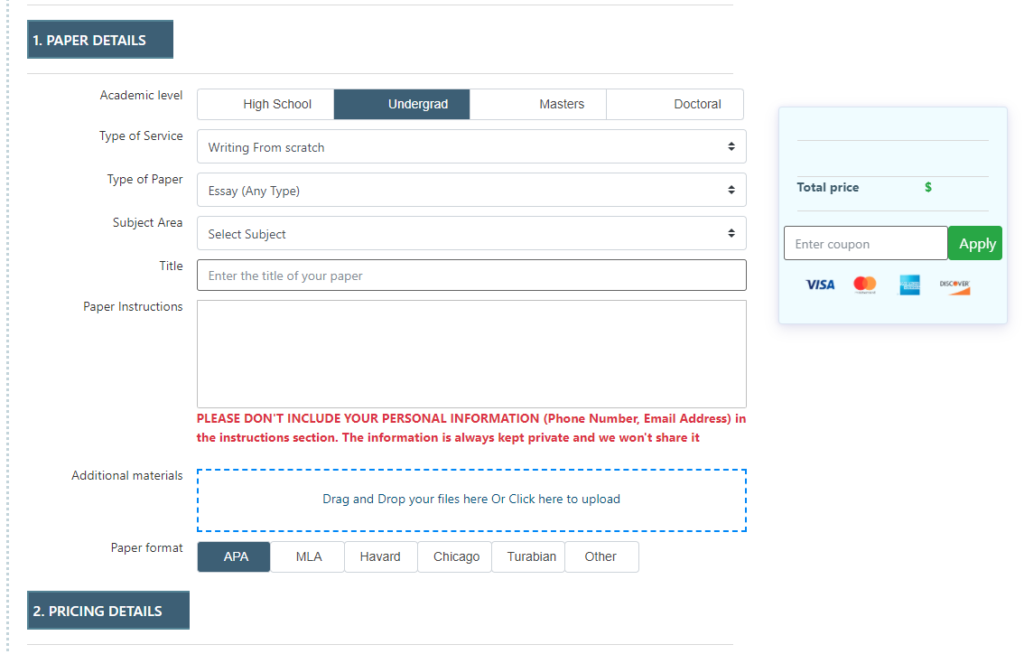Families in Early Childhood Education
Assignment 1a: Digital Response
Please view the marking rubric for this assignment to see what we are looking for.
Relevant Learning Outcomes: 12, 2, 3, 4, 5
Assignment 1 involves the exploration of relevant literature to critically engage in an informed response to a statement.
To complete this assessment you should:
1. Read and work through modules 12, 2, 4, 5, and 6 thoroughly as you need to demonstrate your broad knowledge from all of these modules in this assignment. Read the following statements and chose ONE to work with.
In the interests of fairness, all families are given equal opportunities and support in Australia. As professional educators we should also show the exact same attitude. No families should be given special treatment regardless of their background or circumstances.
2. Consider: What are the issues the statement is raising. Are these arguments applicable today? What are the implications of these ideas for staff working in early childhood settings?
You must respond to one of the statement fully, not just merely use it as a prompt for an assignment. The statement is expressing an opinion which you may or may not share with the author. You need to draw on your knowledge throughout the first modules in order to respond to these statements fully. The assignment is not a chance for you to give a history lesson, or regurgitate everything you have learnt. It is an opportunity for you to use the materials to respond to a statement.
3. Read, listen to and view the resources in Learning Module 12, 2, 3, 5 and 6. The text is compulsory reading. Other readings are for you to explore and use for assignments. Many of the readings for these modules will give you a great overview of the unit and help.
4. Create your response: You may decide what form your digital response will take. How you respond is entirely at your discretion. I encourage you to be creative and innovative. AN IMPORTANT PART OF THIS ASSIGNMENT IS TO REALLY ENGAGE YOUR AUDIENCE. A SIMPLE WORD DOCUMENT OR A FEW COLOURED SLIDES FOR PRESENTATION IS NOT SUFFICE. YOU MUST THINK OF CREATIVE WAYS TO INCLUDE DIGITAL DEVICES SUCH AS IMAGES, GRAPHICS, AUDIO, GRAPHS, TABLES, VIDEO ETC. You do not need to use all of these devices, but some of them can be used very effectively to capture and retain your audience’s attention.
The following are examples only (please feel free to be innovative):
– an excerpt from an e-magazine, e-newsletter or for new staff members and/or parents from a fictional preschool or centre discussing these issues (word, publisher, or any other digital format that works for you).
– an audio recording of a scripted conversation, meeting or interview between different persons highlighting different perspectives (.mp3 or .mp4a or .wmv sound file plus a transcript as a PDF)
– an information pamphlet or newsletter from a particular body or organisation
– a policy statement from a fictional centre or context
– an electronic poster designed in PowerPoint to present to policy makers or at a conference
– a presentation or workshop for colleagues and/or the community which may be presented in PowerPoint (please remember that slides should not be overcrowded with information, so dot points with a workshop handout in PDF form may be suitable)
– the posing of a question accompanied with link/s to group-created website, blog, wiki which responds to this question
– a survey and the findings (an analysis) from this survey conducted about a particular relevant topic
Wherever possible, incorporate relevant practical examples from your work, past or present. These could be presented as fictitious case studies. Please remember that if you are using names you need to change these for privacy reasons and any photographs need to have written permission from the parents (submitted as an appendix) or have the faces blurred or blocked out.
Your response should also show us a broad knowledge of ALL of modules 12, 2, 4, 5, & 6 with referenced ideas from the resources. Your response should not just be focussing on one or 2 issues, but rather all of the issues. A minimum reference list of 10 entries is required with at least 8 from the text/resources/literature provided in this Unit. Your references list is not a reading list. You must have included the references in the body of your work. Keep direct quotes for real gems and simply back up your ideas with the relevant references which show where your ideas are coming from.
Hint: How does the statement relate to: theories of families, key learnings from module 12, module 2 and so on.
Assignment 1b: Annotated Resources and Tips for working with Families
Word length:
??300€”350 words approximately for the resources,
??a maximum of 300 words for the tips for working with families.
??The 4 joint group responses are a shared document with your group members and should be around 800€”1200 words (of which a proportion will be yours).
Relevant Learning Outcomes:1,2,3,4,5
Requirements:
??A minimum of 2 resources is expected from you (individual work),
??2 tips (individual work)
??4 sub€”group responses (group work document submitted by every contributing group member €“ EVERY GROUP MEMBER PUTS IT IN THE
APPENDIX OF THEIR OWN ASSIGNMENT 1a).
This assignment has 3 distinct, but related parts.
I. The first part requires you to work in your SUB€”GROUPS to form a joint response to your 4 family/work scenarios. After you come up with the ideas, the hard part will be appointing an editor for each scenario to cut down the ideas to a concise document in DOT POINT FORM (refer to the word count above). The editor may like to use colour coding to show each contributor. Please share the job of editing amongst your selves fairly. You will submit all 4 of these responses.
This task requires you to draw on your professional knowledge, experience and new knowledge from this unit.
You are going to provide imput into a group response by providing possible responses to this family case scenario in your small study groups. PLEASE USE DOT POINTS AND GIVE BRIEF IDEAS OF HOW YOU WOULD SUPPORT THE CHILDREN AND PARENTS AND
IN YOUR SMALL STUDY GROUPS PUT THE NAME OF THE FAMILY AS THE HEADING AND AID GROUP DOCUMENT’ TO THE HEADING.
€¢ CUT AND PASTE THE QUESTIONS BELOW AND USE DOT POINTS AND GIVE BRIEF IDEAS OF HOW YOU WOULD SUPPORT THE CHILDREN AND PARENTS.
The Hattenburgs
Attending your small community preschool in a regional town you have Alicia Hattenburg in the 4 year old group two days a week, and on a different day you have 3 year old Douglas. The family have in the past been very organised, supportive of their children’s preschool education and incredibly helpful parents. Mum is at home with the children and studying externally. Dad works with a transport company full time. They regularly cooked the barbecues at the Christmas concert, helping with fundraising activities and even attended committee meetings. You wish all your families could be this easily involved.
The Hattenburgs have no extended family in town as they are from inter-state and have only been here about 2 years. They seem to have some good family friends within the preschool community.
Although they had planned on having no more children, at the end of last year Mrs Hattenburg became pregnant, much to her surprise. In July twins were born. Around the same time Mr Hattenburg was in an accident on a motorbike and his leg was crushed requiring him to be at home and he is on half pay.
Since that time Alicia and Douglas are arriving and departing preschool very late and often don’t have everything they need for the day. Forgotten lunchboxes, no clean changes of clothes, no hat, no news items, forgotten excursion notes and inappropriate clothes for the weather now all seem the norm. Douglas has regressed in toileting and Alicia seems quite withdrawn. Last week you witnessed the parents openly yelling at each other in the car park in front of the children. The parents seem sleep deprived and very stressed.
1. How will you support the children during this time of high stress?
2. How will you support the family as a whole?
3. What community services could be of help?
4. How will you broach the topic with the parent(s)?
5. How and when will you follow your actions up?
6. What would you do if there was no improvement?
7. Have you had any similar experiences with families (please briefly explain using pseudonyms and fake locations) and if so how was it handled at the time?
Small Group Task: Family Scenario €“ The Lees
This task requires you to draw on your professional knowledge, experience and new knowledge from this unit.
You are going to provide imput into a group response by providing possible responses to this family case scenario in your small study groups. PLEASE USE DOT POINTS AND GIVE BRIEF IDEAS OF HOW YOU WOULD SUPPORT THE CHILDREN AND PARENTS
IN YOUR SMALL STUDY GROUPS PUT THE NAME OF THE FAMILY AS THE HEADING AND AID GROUP DOCUMENT TO THE HEADING.
€¢ CUT AND PASTE THE QUESTIONS BELOW AND USE DOT POINTS AND GIVE BRIEF IDEAS OF HOW YOU WOULD SUPPORT THE CHILDREN AND PARENTS.
The Lees
You are an inner city day-carer and you have 4 year old Lucy who attends 2 days a week. Lucy is a very special child that her parents waited a long time for. They were unable to conceive naturally and after many failed attempts at IVF they were still unable to have a baby. Both the parents are of Chinese descent so they arranged to adopt a baby girl, Lucy from China.
There seems nothing the parents will not do for their little girl who is now 4 years old. Lucy is involved in after preschool activities 5 days a week and often seems to have things on during the weekend. The parents talk to you frequently about how gifted Lucy is and they also seem to give her homework’ including handwriting and flash card reading which you don’t think is appropriate for that age group.
Over the last 6 months both you and your staff have become aware of the start of a stutter that seems to be getting worse.
1. How will you support the child?
2. How will you support the family as a whole?
3. What community services could be of help?
4. How will you broach the topic with the parent(s)?
5. How and when will you follow your actions up?
6. What would you do if there was no improvement?
7. Have you had any similar experiences with families (please briefly explain using pseudonyms and fake locations) and if so how was it handled at the time?
II. The second part is INDIVIDUAL and does not need ANY group consultation. You need to choose 2 of the family scenarios and reflect on them. Imagine that these families suIDenly RELOCATED to your workplace or home community that may be very different to the original case scenario setting. Think about what you would do to support them in YOUR community. What resources would you use to help them (this may be similar or different to the ones you have mentioned in your group work). You need to give 2 (or 3) annotated resources for this section of this assignment, with at least one resource for each of the chosen 2 families. (Most people will just do one for each family). This also has a word limit outlined above.
III. The third part is INDIVIDUAL and requires no group consultation. Contribute a minimum of 2 tips to the Working with Families’ database and provide a copy in your appendix of your assignment. The tips will reflect effective and creative ways to work with ANY families that you have witnessed or implemented yourself
With strong results. WE DO NOT WANT TIPS CUT AND PASTED FROM THE INTERNET OR FROM A BOOK €“ PLEASE USE ORIGINAL IDEAS. Each tip should be no more than 150 words but will more likely to be 50€”100 words. Dot points are strongly recommended and 150 words may far exceed what is needed. For each tip provide one dot point or one sentence (maximum) showing how it links to frameworks or current standards or current Early Childhood philosophies e.g.
This relates to EYLF (DEEWR, 2009) Principle X because €¦
To complete this assessment you should:
a) Read, listen to and view the resources in the Learning Modules, particularly Learning Module 3. Complete the Family Case Scenarios throughout the modules in your subgroups sharing ideas about support services.








